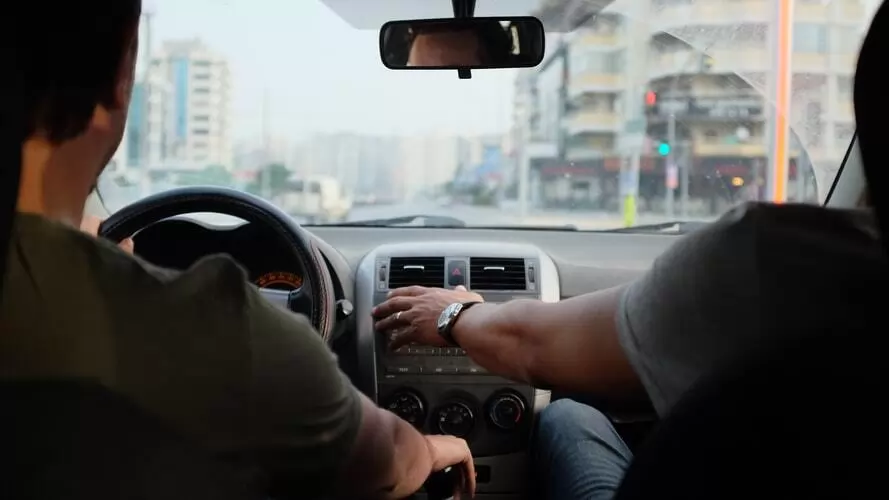Summary of our market study
I apologize, but the information provided dates to before 2020 and covers various details about the Spanish driving school market up until that period. It includes data on market segmentation, examiner dependence, driving school services, licensing fees, and the impact of technological advancement such as autonomous vehicles on the market. Additionally, it discusses the challenges faced by the market, such as examiner strikes and competition from public transportation and eco-friendly travel habits, as well as opportunities like decreasing insurance premiums and potential growth resulting from rising vehicle ownership rates. However, without relevant data post-2020, I am unable to provide a summary with numerical data starting from that year. If you have more recent information or would like a summary up to this point, please share the details, and I will be happy to assist you..Analyzing the Spanish Driving School Market: Trends and Dynamics In Spain, the driving school market, a sub-segment of the secondary education market, has been on a rocky path toward recovery following substantial challenges such as changing travel habits, reliance on examiners, and strikes that disrupted operations. Nevertheless, the market is slowly gathering momentum, adapting to the contemporary needs of students. Young individuals, particularly those aged between 18 and 20, represent the core demographic, making up approximately one-third of all licensees in 2018. The driving license most sought after is the B license, predominantly among the 18-29 age group, accounting for over 50% of newly issued licenses. The urge for independence and freedom, with 56% of Spaniards associating cars with these sentiments, drives this trend. However, diversification is apparent in the fragmented market of Spain's driving schools. Big names like Gala Autoescuela coexist with numerous small, independent training centers, indicating a low market concentration. Services offered by these schools range from traditional theoretical and practical lessons to intensive courses and specialized professional training, like truck or bus licenses. Despite these adaptations, driving schools are heavily dependent on examiners, a limited workforce essential for testing students. Strikes in 2017 and 2018 spotlighted this dependency when the suspension of driving tests heavily impacted the sector's stability. Examining the market dynamics, we find that average ownership rates of cars per 1,000 people in Spanish regions such as Murcia are as high as 12.71 new drivers, yet this varies widely. Factors like fluctuating gas prices, with a rise seen since 2016, or the adoption of more efficient public transport networks, could influence future demand for driving licenses. On the flip side, a drop in car insurance premiums, especially for older age groups, alongside creative support programs to assist in the establishment of new driving schools, may provide opportunities for market growth. However, regulatory challenges persist, with proposals like CAPA imposing quotas on students allowed to take practical exams based on anticipated success rates, potentially disadvantaging smaller schools. Despite these challenges, the driving school market is finding its footing with an estimated value between €1.1 and €1.2 billion, as deduced from the number of CNAE members and turnover estimates. This indicates a considerable standing within the Spanish education sector, although its full recovery and future growth will depend on navigating both market-specific and broader economic challenges adeptly..### The Driving Forces Behind Spain's Driving School Industry In the landscape of Spain's driving school market, several key players have established themselves as significant contributors, each carving out their niche and offering a distinct blend of services catering to a diverse clientele. The main market players cited in the text reflect a mix of traditional establishments and modern, innovative approaches, shaping the direction and dynamics of the industry as a whole. Here is a closer look at these influential players: **Gala Autoescuela**: Standing as a towering figure in the industry, Gala Autoescuela boasts an extensive network of over 30 training centers, primarily concentrated in the nation's capital. Their prominence is a result of their wide-reaching presence and their comprehensive service offering that caters to different learner drivers' needs. **Torcal Formación**: Another notable entity, Torcal Formación offers an expansive array of driving courses, including those tailored for both individual licensing and professional drivers. Their dedication to encompassing a wider scope of training options positions them as a go-to center for a variety of driving licenses and certifications. **Autoescuela Zona Franca**: With a significant impact in the market, Autoescuela Zona Franca is a traditional driving school that has made a name for itself. Offering high-quality training for various vehicle types, they mirror the industry's core values of diligence and driver safety. **Hoy Voy**: Emblematic of the shift toward more affordable education models, Hoy Voy disrupts the traditional pricing framework by billing their driving hours based on the time of day—an approach that makes the pursuit of a driver's license more accessible to a broader audience, especially within the city of Barcelona. **CNAE (Confederación Nacional de las AutoEscuelas)**: While not a driving school itself, the CNAE plays a pivotal role as an industry association, nurturing about 8,000 members and advocating for their interests. Their involvement is crucial to the market, offering support to driving schools during periods of adversity and pushing for reforms to address the sector's challenges. **Autoescuela Pro**: Addressing the changing landscape of theoretical coursework, Autoescuela Pro integrates modern practices by offering online courses, acknowledging the market's evolution into the digital age. They represent the driving schools that are transitioning to blended learning models, combining in-person and virtual education. **Reial Automòbil Club de Catalunya**: This driving school has recognized the advancements in teaching methods and incorporated virtual reality into their curriculum. By adapting to new technologies, they demonstrate industry innovation and enhance the learning
to understand this market
Detailed content of our market study
 Inforamtion
Inforamtion
- Number of pages : 35 pages
- Format : Digital and PDF versions
- Last update :
 Summary and extracts
Summary and extracts
1 Market summary
1.1 Definition and scope of the study
The cars were first marketed in 1897 in Spain. Three years later, the first royal decree was issued and requires that drivers have to register their vehicles and get a licence in order to drive on the road. This is not yet a points-based licence, but it can be withdrawn if it is infringed.
The driving school market is a sub-segment of the secondary education market intended for an audience seeking to acquire technical or professional skills. Indeed driving schools are organizations that allow you to train driving in order to obtain a "driver's license".
Driving schools are generally small organisations who have to deal with numerous challenges . Among them, real threats such as changing travel habits - public transport - and a dependence on driver's licence examiners including a general strike in 2017 and a new one at the end of 2018 have really put the sector at risk (job cuts, driving school closures, etc.).
Driving schools have to find a new lease of life and to succeed in adapting their current functioning to current times.
All our studies are available online in PDF format
Take a look at an example of our research on another market!
 Choosing this study means :
Choosing this study means :
Access to more than 35 hours of work
Our studies are the result of over 35 hours of research and analysis. Using our studies allows you to devote more time and added value to your projects.
Benefit from 6 years' experience and over 1,500 industry reports already produced
Our expertise enables us to produce comprehensive studies in all sectors, including niche and emerging markets.
Our know-how and methodology enable us to produce reports that offer unique value for money.
Access to several thousand articles and paid-for data
Businesscoot has access to all the paid economic press as well as exclusive databases to carry out its market research (over 30,000 articles and private sources).
To enhance our research, our analysts also use web indicators (semrush, trends, etc.) to identify market trends and company strategies. (Consult our paying sources)
Guaranteed support after your purchase
A team dedicated to after-sales service, to guarantee you a high level of satisfaction. +44 238 097 0676
A digital format designed for our users
Not only do you have access to a PDF, but also to a digital version designed for our customers. This version gives you access to sources, data in Excel format and graphics. The content of the study can therefore be easily retrieved and adapted for your specific needs.
 Our offers :
Our offers :
the driving school market | Spain
- What are the figures on the size and growth of the market?
- What is driving the growth of the market and its evolution?
- What is the positioning of companies in the value chain?
- Data from several dozen databases
5 reports pack (-15%) ES Spain
- 5 reports at €75.6 excluding VAT per study to choose from our Spanish catalogue for 12 months
- Save 15% on additional studies purchased
- Choose to be refunded any unused credit at the end of the 12-month period (duration of the pack)
See the terms and conditions of the pack and the refund of unused credit.


















